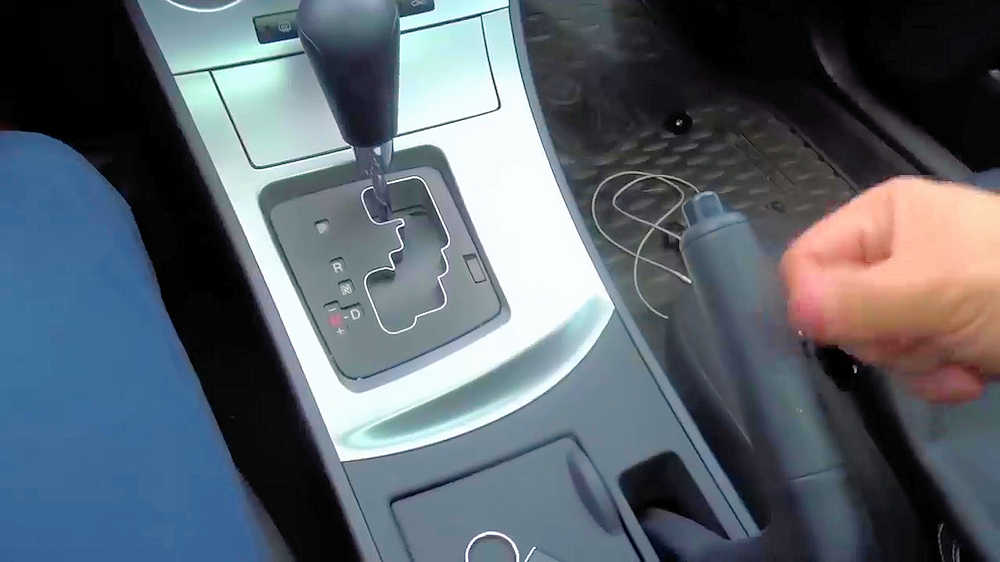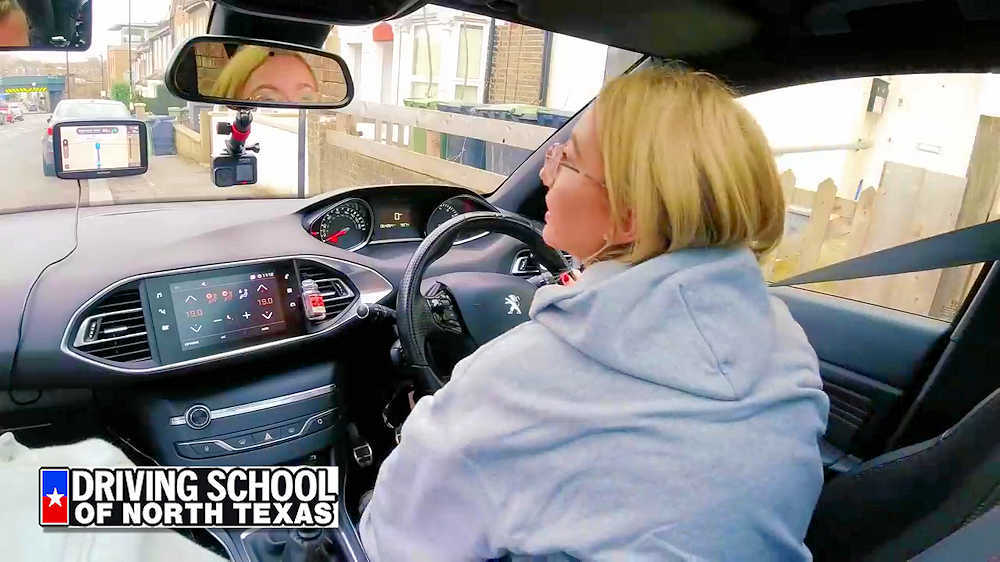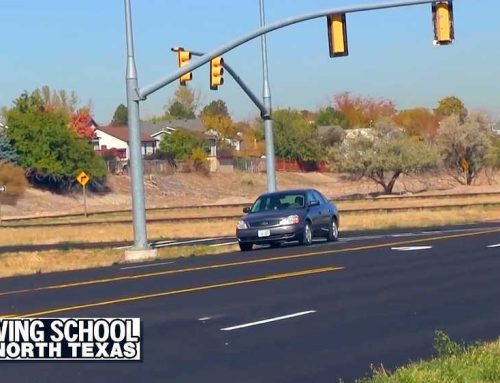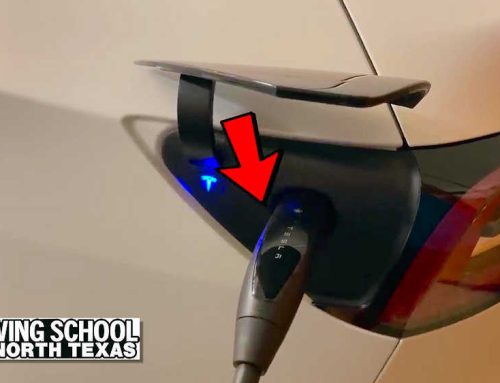Table of contents
- Benefits of Skilled Driver Education and Training
- Eligibility Criteria for Enrolling in a Program
- What to Expect During Driver Education and Training
- Types of Driver Education and Training Programs Available
- How Driver Education and Training Can Improve Road Safety
- Tips for Choosing the Right Driver Education and Training Program
- Frequently Asked Questions
- How long does it take to complete a driver education and training program?
- Is driver education and training mandatory in all states?
- Can I enroll in a driver education and training program if I have a learning disability or special needs?
- Are there any age restrictions for enrolling in a driver education and training program?
- Can I take a driver education and training program online?
- Conclusion
Are you considering enrolling in a driver education and training program? If so, you may have several questions about what to expect and how it can benefit you. In this article, we will answer some frequently asked questions about driver education and training to help you make an informed decision.

Firstly, let’s explore the benefits of becoming a skilled driver with the help of expert instructors. By enrolling in a program, you can gain essential knowledge and skills that will not only help you pass your driving test but also make you a safer and more confident driver on the roads. With the guidance of experienced educators, you can learn crucial defensive driving techniques, understand traffic laws and regulations, and develop responsible driving habits. Whether you’re a beginner or looking to refresh your skills, driver education and training can equip you with the necessary tools to navigate the roads with confidence.
Benefits of Skilled Driver Education and Training
Discover the awesome advantages of becoming a skilled driver through professional driver education and training! These programs provide comprehensive instruction on traffic laws, defensive driving techniques, and vehicle handling, all taught by qualified mentors. By learning from these experts, you can gain valuable knowledge that will help you navigate the roads with confidence. Not only will your skills be enhanced, but you will also be better equipped to handle challenging situations on the road.
In addition to improved skills, training plays a crucial role in reducing accidents and promoting road safety. By understanding defensive driving strategies and how to anticipate potential hazards, you can avoid dangerous situations before they occur. These programs emphasize the importance of safe driving practices such as maintaining a proper following distance, obeying speed limits, and effectively using turn signals. By adhering to these principles learned through professional driver education and training, you can significantly reduce the likelihood of being involved in an accident.
Now that you understand the benefits of driver education and training in terms of improved skills and reduced accidents, let’s explore the requirements for enrolling in a program.
Eligibility Criteria for Enrolling in a Program
To enroll in a program, you must meet certain eligibility criteria. These criteria can vary depending on your location and the specific program you are interested in. Generally, you will need to meet the minimum age requirement and possess a valid learner’s permit or driver’s license. Additionally, you will need to provide the necessary documentation to prove your identity and residency.
The enrollment process typically involves filling out an application form and submitting the required documents. In some cases, you may also need to pass a written test or attend an orientation session before being accepted into the program. As some programs have limited availability, it is important to apply early and ensure that you meet all the necessary criteria.
Here is a table summarizing some common eligibility criteria and required documents for driver education and training programs:
| Eligibility Criteria | Required Documents |
|---|---|
| Minimum age requirement | Birth certificate or passport |
| Valid learner’s permit or license | Proof of residency (e.g., utility bill) |
| Identity verification | Social Security number card |
By meeting these eligibility criteria and successfully completing the enrollment process, you will be on your way to starting your driver education and training journey. In the next section, we will discuss what to expect during this process, including the various components of driver education and training programs.
What to Expect During Driver Education and Training

Get ready for an exciting journey as you dive into the world of driver education and training, where you’ll uncover the secrets of becoming a skilled and confident driver. During your driver education and training program, there are certain expectations you should have in mind. Firstly, you can expect to learn essential traffic laws and regulations to ensure your safety and the safety of others on the road. Additionally, the curriculum will cover defensive driving techniques, helping you develop the skills needed to anticipate potential hazards and react appropriately. Moreover, you’ll receive practical hands-on experience behind the wheel through supervised driving practice sessions.
In your driver education and training program, the curriculum overview will typically consist of both classroom instruction and practical driving exercises. During class, you’ll learn about topics such as road signs, traffic signals, right-of-way rules, speed limits, and more. This knowledge is essential for passing written exams required to obtain a learner’s permit or driver’s license. The practical driving exercises will allow you to apply what you’ve learned in real-life situations under the guidance of a qualified instructor.
| BOOK YOUR DRIVING CLASS TODAY! |
| Driving School of North Texas |
To give you an idea of what to expect during your program:
- Classroom instruction on traffic laws and regulations
- Defensive driving techniques to anticipate hazards
- Hands-on experience behind the wheel with supervision
- Lessons on road signs, traffic signals, speed limits, etc.
- Practical driving exercises to apply learned concepts
Now that you know what awaits in your driver education and training journey, let’s move on to explore different types of programs available that cater specifically to your needs.
Types of Driver Education and Training Programs Available
There are various options available for individuals seeking driver education and training programs to suit their specific needs and preferences. One popular option is completing online driver education courses, which provide flexibility and convenience for those who may have time constraints or prefer self-paced learning. These online programs typically cover the rules of the road, safe driving techniques, and defensive driving strategies through interactive modules and quizzes.
Another essential aspect of driver education is hands-on behind-the-wheel training. This type of training allows new drivers to practice their skills under the guidance of a qualified instructor. Behind-the-wheel training typically takes place in a dual-controlled vehicle, where the instructor has access to a second set of controls in case of emergencies. This training helps new drivers develop essential skills such as steering, braking, accelerating, lane changing, and parking.
By combining online options with behind-the-wheel training, individuals can receive a comprehensive driver education experience that prepares them for real-world driving situations. These programs not only teach the necessary knowledge and skills but also emphasize the importance of safe driving practices to improve road safety. Understanding how driver education and training can improve road safety is crucial for creating responsible drivers who are aware of potential risks on the road and take appropriate actions to prevent accidents.
Transition: Now that you’re familiar with the types of driver education and training programs available, let’s explore how these programs can make our roads safer by instilling good driving habits and behaviors.
How Driver Education and Training Can Improve Road Safety
Imagine yourself as a skilled driver, maneuvering through traffic with the precision of a seasoned pilot navigating a crowded sky. This level of expertise can be achieved through driver education and training programs that focus on defensive driving techniques. Defensive driving emphasizes anticipating potential hazards on the road and taking proactive measures to prevent accidents. By instilling these skills in new drivers, driver education and training programs play a crucial role in improving road safety.
One key aspect of driver education and training programs is their impact on insurance rates. Insurance companies often offer lower premiums to drivers who have completed an approved driver education course. This is because these programs equip drivers with the necessary knowledge and skills to navigate the roads safely. Insurance providers recognize that drivers who have received proper training are less likely to engage in risky behaviors or cause accidents, leading to fewer claims filed against their policies. By investing in driver education and training, not only do individuals become safer drivers, but they also enjoy financial benefits through reduced insurance costs.

To emphasize the importance of defensive driving, let’s take a look at this table:
| Defensive Driving Benefits |
|---|
| Reduces accident risk |
| Lowers insurance rates |
| Enhances overall road safety |
| Fosters responsible driving habits |
| Minimizes damage during collisions |
As shown in the table above, learning defensive driving techniques offers numerous benefits that contribute to overall road safety. It helps reduce accident risks by encouraging drivers to remain alert and anticipate potential dangers ahead. Moreover, it fosters responsible driving habits by teaching individuals about following traffic rules and regulations meticulously. By incorporating defensive driving techniques into driver education and training programs, we can create a generation of safer drivers who prioritize caution on the roads.
| BOOK YOUR DRIVING CLASS TODAY! |
| Driving School of North Texas |
Enrolling in a comprehensive driver education and training program is crucial for improving road safety. These programs emphasize defensive driving techniques that help reduce accident risks while fostering responsible driving habits among participants. Additionally, completing such programs can lead to lower insurance rates, as insurance companies recognize the value of well-trained drivers. With this in mind, it is essential to choose the right driver education and training program that suits your needs and preferences. Now let’s explore some tips for selecting the ideal program in the next section.
Tips for Choosing the Right Driver Education and Training Program
Enrolling in the right driver education program can be a game-changer, equipping you with the skills to navigate the roads like a seasoned professional. When choosing a program, it’s essential to consider cost factors. Look for programs that offer affordable tuition fees without compromising on quality. Compare prices and find out if there are any additional costs involved, such as textbooks or licensing fees.
Another important consideration is whether the program offers online options. Online driver education and training programs have become increasingly popular due to their flexibility and convenience. With online courses, you can learn at your own pace from the comfort of your home. This is especially beneficial if you have a busy schedule or live in an area where access to traditional in-person classes may be limited.
Before selecting a program, make sure to read reviews and testimonials from previous students. Find out what they liked or disliked about the program and how it helped them improve their driving skills. Additionally, check if the program has any accreditation or certifications that ensure its credibility and quality.
When choosing a driver education and training program, consider cost considerations and explore online options for added convenience. Take your time to research different programs, read reviews, and ensure they meet your specific needs. By investing in a reputable program that suits your budget and learning style, you’ll be setting yourself up for success on the road ahead.

Frequently Asked Questions
How long does it take to complete a driver education and training program?
To complete a driver education and training program, it typically takes several weeks or months, depending on your specific state requirements and the pace at which you progress through the program. The duration of driver education can vary from state to state, but most programs consist of a combination of classroom instruction and behind-the-wheel training. These programs are designed to provide you with the necessary knowledge and skills to become a safe and responsible driver. In order to enroll in a driver education program, you may need to meet certain requirements such as age restrictions or having a learner’s permit. It is important to check with your local Department of Motor Vehicles (DMV) or licensing agency for specific information about driver education requirements in your state.
Is driver education and training mandatory in all states?
Driver education and training is mandatory in all states. It helps you become a safer and more responsible driver while often leading to lower insurance rates for young drivers. So while it might feel like a drag at times, just remember that it’s all for your own good (and the good of everyone else on the road).
Can I enroll in a driver education and training program if I have a learning disability or special needs?
Enrolling in a driver education and training program is possible even if you have a learning disability or special needs. Many programs have accommodations in place to support individuals with specific requirements. The enrollment requirements for these programs may vary, but they typically involve providing documentation of your disability or special needs and discussing any necessary accommodations with the program coordinator. These accommodations can range from modified instructional materials to additional time for testing, ensuring that you receive the necessary support to successfully complete the program and become a safe and confident driver.
Are there any age restrictions for enrolling in a driver education and training program?
There are generally age restrictions for enrolling in a driver education and training program, as each state has its own regulations. In most states, you must be at least 15 or 16 years old to enroll. However, some states may allow you to start the program at a younger age if you have certain qualifications or special circumstances. Additionally, the duration of the program can vary depending on your state’s requirements and the type of program you choose. It typically ranges from a few weeks to several months, with a combination of classroom instruction and behind-the-wheel training.
Can I take a driver education and training program online?
You can definitely take a driver education and training program online, which offers numerous benefits. Online driver education provides the convenience of learning from the comfort of your own home, allowing you to study at your own pace and on your own schedule. This flexible learning option is particularly useful for individuals with busy lifestyles or those who live in remote areas where access to traditional classroom-based courses may be limited. Additionally, online training often includes interactive modules, videos, and simulations that enhance the learning experience and make it more engaging. With online driver education, you have the opportunity to develop a solid foundation of knowledge and skills necessary for safe driving, all while enjoying the convenience and flexibility that online learning provides. So why not take advantage of this convenient option and get started on your journey towards becoming a skilled and responsible driver?
Conclusion

In conclusion, driver education and training programs can offer numerous benefits to individuals looking to improve their driving skills. By enrolling in a program, you can gain the necessary knowledge and experience to navigate the roads safely and confidently. These programs provide valuable information about traffic laws, defensive driving techniques, and hazard awareness, equipping you with the tools needed to make responsible decisions behind the wheel.
Choosing the right driving school and training program is crucial in ensuring that you receive quality instruction tailored to your needs. Just like selecting a key that perfectly fits a lock, finding the right program will unlock your potential as a skilled and conscientious driver. So take your time, research different options, read reviews, and consider recommendations from friends or family. Remember that investing in driver education and training is an investment in your safety on the road.
By taking advantage of these opportunities for learning and growth, you are not only enhancing your own driving abilities but also contributing to overall road safety. When drivers are educated on safe practices and equipped with proper training, accidents can be significantly reduced. So don’t hesitate – enroll in a driver education and training program today to become a confident driver who navigates the roads with ease while keeping yourself and others safe. It’s time to steer towards a brighter future on the open road!
| BOOK YOUR DRIVING CLASS TODAY! |
| Driving School of North Texas |
Contact us at either of 4 convenient locations:
Driving School of North Texas
204 N. Greenville #300
In the CiCi’s Pizza Center
Allen, Texas 75002
214-383-9795
https://goo.gl/maps/fjZfRkMFqv2UPsjj9
Driving School of North Texas
6449 Coit Road #114
South of Centennial High
School Frisco, Texas 75035
469-633-7110
https://goo.gl/maps/6NwoSzp3AXJkbyacA
Driving School of North Texas
4433 Punjab Way #401
Frisco, Texas 75033
214-705-9959
https://goo.gl/maps/kEdTkLsVfwfa3ke39
Driving School of North Texas
4900 Eldorado, #132
McKinney, Texas 75070
214-504-9292
https://goo.gl/maps/Ls54fbeQi2JQMqrW6





